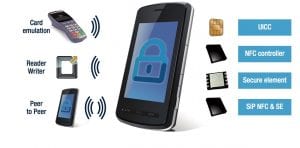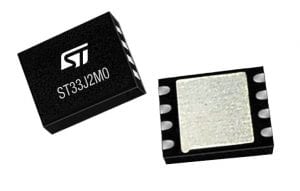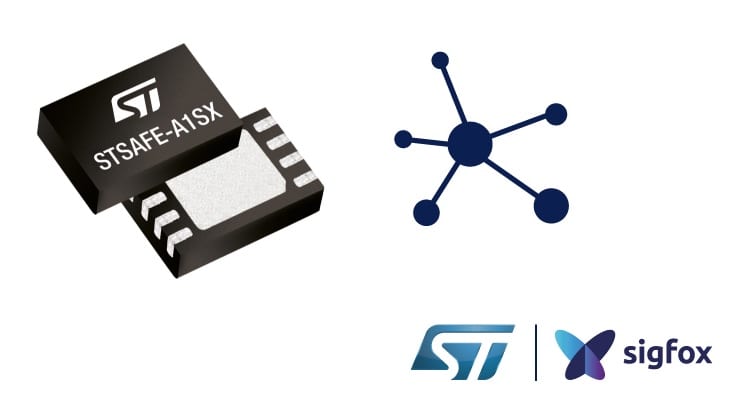The ST54F and ST54H, the newest System in Package (SiP) components from ST, include its latest NFC controller, the ST21NFCD, and the ST54H integrates the ST33J2M0, a bigger, faster, and more versatile secure element. ST is one of only two companies in the world to provide complete and certified solutions for mobile payment. What was once the flagship feature of a single smartphone company can now be the standard on every single smartphone on the market, because ST offers a powerful and cost-effective platform, with hardware and software support. At the platform’s core is ST’s NFC all-in-one solution, and with these two new SiPs, ST is ensuring manufacturers can offer a more comprehensive experience to their customers.
ST54F and ST54H : Power and Protocols

The previous generation of NFC SiP, the ST54D, and ST54E, used the ST21NFCB, and ST21NFCC controllers, respectively. The new ST21NFCD controller in the ST54F and ST54H is a revolutionary change because unlike the former models, which used a Smartcard ST21 microcontroller (MCU), the newest devices include a Cortex-M3 32-bit MCU running at 28 MHz. This complex architecture can manage signal and power consumption better to offer enhanced active load modulation, the technology responsible for ensuring that an extremely small NFC antenna can send a signal to a reader, even if it is trapped next to the battery and the metal casing of a smartphone or watch, for instance.
The ST21NFCD is also compatible with more RF communication standards than the previous generation of controllers. For instance, whereas the ST21NFCC only had passive modes (card emulation), the latest IC offers, passive, active (read-write), and peer-to-peer modes. Furthermore, unlike the previous ST21NFCB, which only offered one standard for each of these three modes, the ST21NFCD supports three active modes (ISO 14443 Type A & B, JIS X 6319 – 4, and MIFARE® Classic(a)(b)), four passive modes (NFC Forum Type 1/2/3/4/5 tags, ISO 15693, MIFARE® Classic12, and Thinfilm Barcode), and ISO/IEC 18092 in P2P. As a result, the new platform will support more solutions, be certified to run more industry standards, and be compatible with more use cases.
ST54F and ST54H : Now With PMU
The ST21NFCD also includes its own power management unit (PMU), with low-dropouts (LDO), and a DC linear voltage regulator that is used when the supply voltage is close to the output. There are LDOs for internal voltages, two LDOs for external voltages, a monitoring system, and even a low power mode. Hence, the controller manages the power supply for the whole SiP–both the controller and the secure element–which greatly improves efficiency.
One practical consequence is the fact that in an NFC reader, the power consumption of either of the new SiPs is so low that it is possible to keep the chip in Field Detector mode without turning too many functions off. Therefore, when the system does detect the presence of a passive NFC device, and it is time to wake the controller, the whole system can power-up much quicker. As a result, the time it takes for the reader to recognize the presence of an NFC device, and process it, is greatly shortened, making the new ST54F and ST54H the go-to SiP for wearables and mobile devices.
ST54F vs. ST54H : lower power consumption or faster performance

The main distinguishing feature between the ST54F and ST54H is the presence of the ST33G1M2 secure element in the former, and the ST33J2M0 in the latter. Both rely on the 32-bit SecurCore SC300, but the first one runs at 25 MHz, and includes 30 KB of user RAM, as well as 1280 KB of Flash, whereas the second one can zip up to 60 MHz, and integrates 50 KB of user RAM, and 2048 KB of Flash. As a result, the ST33J2M0 will perform crypto-operations faster, and its engine now offers MIFARE acceleration, on top of the DES, AES, and NESCRYPT optimizations found on both systems. Finally, the faster module also includes a watchdog timer used to implement defensive programming strategies to help the system deal with crashes and failures on its own.
The latest SiPs represent a new milestone in ST’s history, and it’s impossible to explain in a single post all the new features that make them special. For instance, we haven’t even touched on the new and smaller antenna design, which enables the PCB to be shorter, and the bill of materials simpler, making the entire solution more cost-effective, and easier to implement in the final product. And thanks to the enhanced active modulation mentioned earlier, it is possible to fit the SiP in places that would have been problematic before. The ST21NFCD, ST54F, and ST54H are now in volume production. To know more about groundbreaking mobile technologies, check out the life.augmented blog. For inquiries regarding ST’s products, please visit its website.




